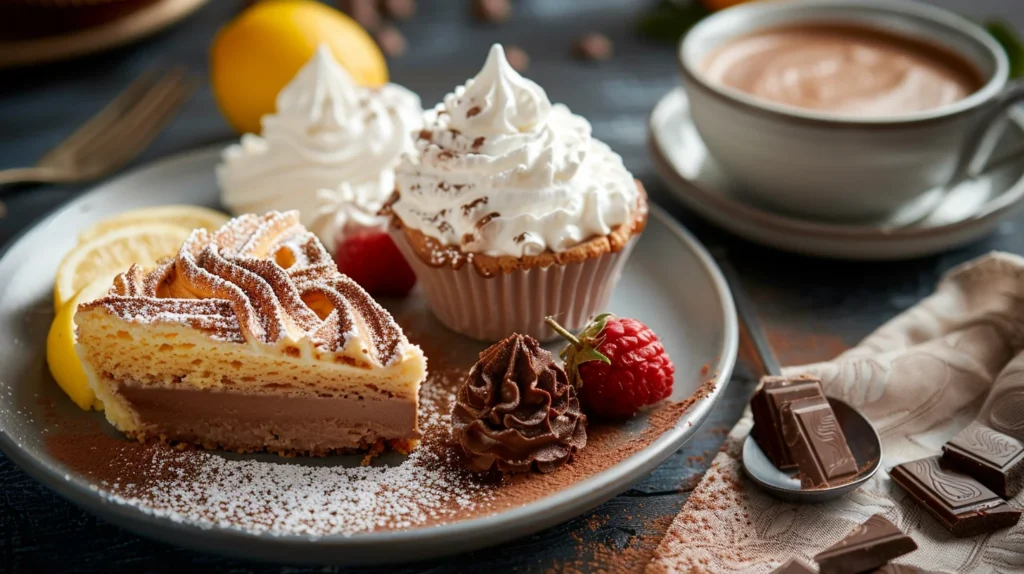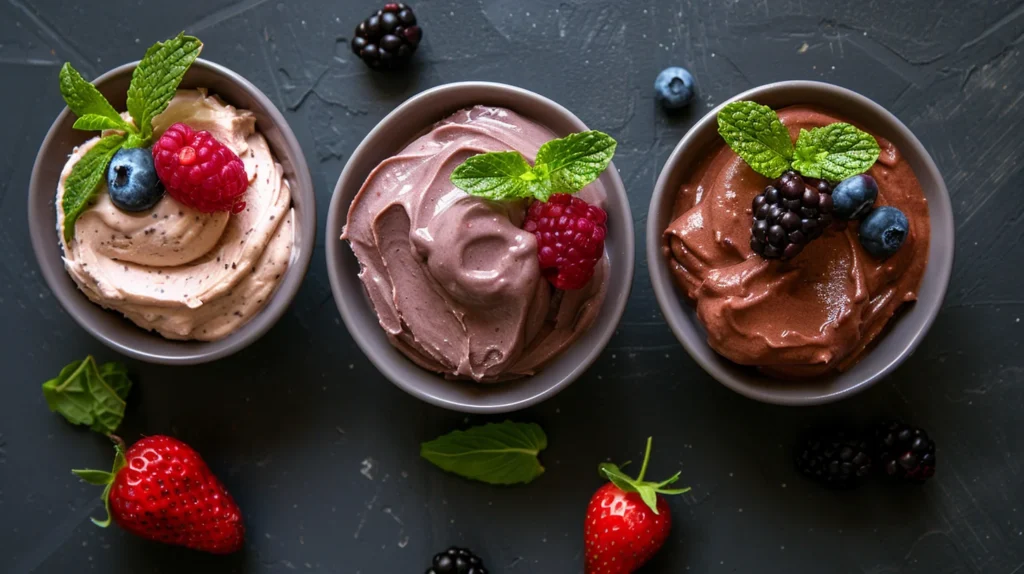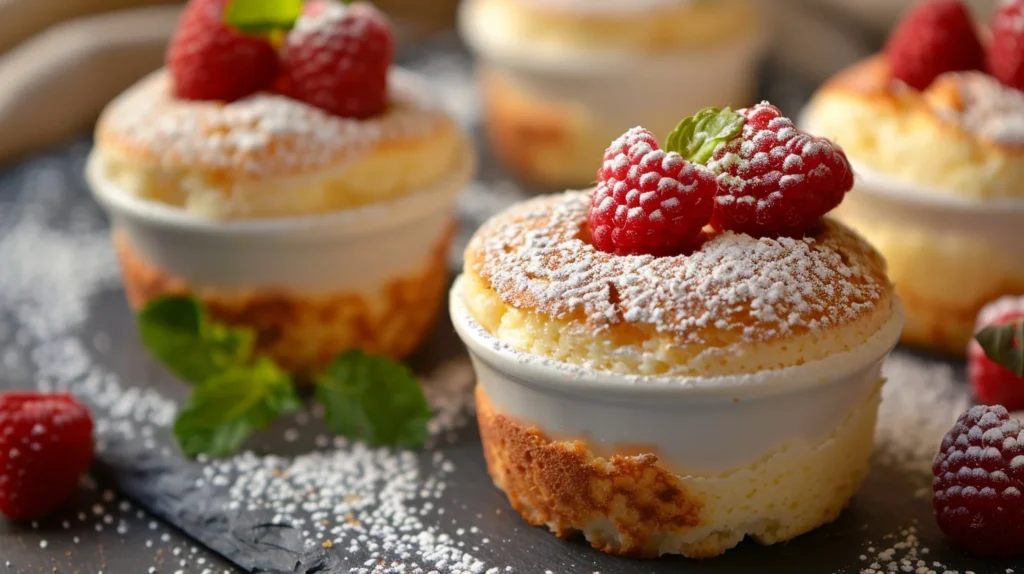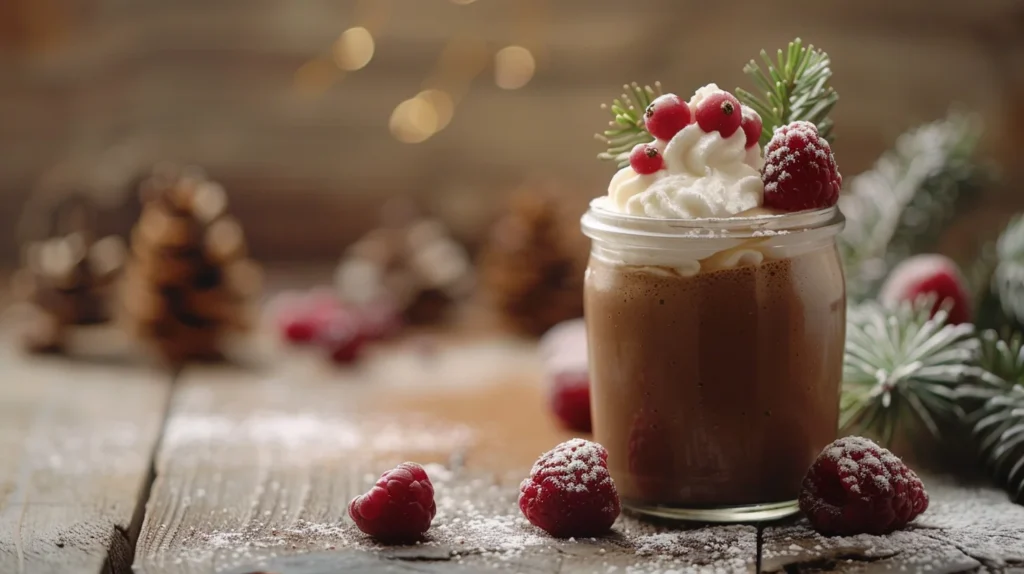
When you think of fluffy meringues, creamy mousses, or light soufflés, there’s a secret ingredient making the magic happen: protein foams! These delicate structures are a marvel in the kitchen, combining science and artistry. But what exactly are protein foams, and how do they work their culinary magic? Let’s dive into this fascinating topic and uncover everything you need to know about recipes that use proteins to form foams.
Introduction to Protein Foams in Culinary Science
Ever wondered what gives your favorite desserts and dishes that light, airy texture? It’s not just wizardry—it’s science in action. Protein foams are everywhere in cooking, from frothy cocktail toppings to those towering soufflés we all dream of mastering. Let’s break down the basics.
What Are Protein Foams?
At its core, a foam is just a collection of tiny bubbles trapped in a liquid or solid matrix. Think of the airy bubbles in a mousse or the frothy head on a latte. When it comes to protein foams, proteins act like scaffolding, holding those bubbles in place.
Proteins are molecules that love multitasking. They unfold when beaten or heated, wrapping around air bubbles to stabilize them. This is what creates that magical, fluffy structure.
“Protein foams are like the bubble wrap of the culinary world—delicate yet resilient!”
How Do Proteins Form Foams?
Here’s where it gets a bit technical (but stick with me—it’s fun!). Proteins in foods, like eggs or cream, are made up of amino acids. When you whip or heat these proteins, they stretch out and form a network. This network traps air, creating foam.
Think of it like blowing soap bubbles. Without the soap (or in our case, the proteins), those bubbles would pop immediately. Proteins make the foam stable enough to hold its shape.
The Role of Proteins in Culinary Applications
Protein foams aren’t just a fun science experiment—they’re a cornerstone of many beloved recipes. Let’s explore why proteins are so critical in the kitchen.
Why Are Proteins Essential for Foam Formation?
Imagine trying to blow up a balloon without any rubber to hold the air in. Proteins are the “rubber” in culinary foams, giving them structure and strength. Without proteins, your soufflé would collapse faster than a poorly built sandcastle.
The unique ability of proteins to unfold and reassemble makes them perfect for creating stable foams. And the best part? You don’t need fancy tools—just a whisk and a bit of patience.
Common Protein Sources for Culinary Foams
Not all proteins are created equal when it comes to foam-making. Here are some of the most popular options:
- Egg Whites: The gold standard for foams. Egg whites whip up beautifully, creating stable, fluffy foams perfect for meringues and soufflés.
- Gelatin: A go-to for mousses and jellies. It helps create smooth, creamy textures.
- Milk Proteins: Found in cream and used for creating frothy toppings in coffee or desserts.
- Plant-Based Proteins: Think aquafaba (chickpea water) or soy protein. These are game-changers for vegan recipes.
“Fun Fact: Aquafaba is the liquid gold for plant-based chefs. Who knew chickpea water could whip up into a frothy delight?”
Examples of Recipes Using Protein Foams
Enough theory—let’s talk about food! There are so many delicious dishes where proteins take center stage in foam form. Here are some iconic examples.
Classic Meringues: The Science Behind Fluffiness

Meringues are a foam lover’s dream. Made from whipped egg whites and sugar, they’re light as air but strong enough to hold their shape. Want to impress your friends? Try making pavlova or French macarons.
Mousses: Balancing Texture and Flavor

Whether it’s chocolate, fruit, or even savory mousses, these are all about balance. The whipped cream or egg whites in a mousse create a velvety texture that feels like eating a cloud. Who doesn’t love that? 😍
Soufflés: Achieving Perfect Rise with Protein Foams

Ah, the soufflé—a true test of culinary skill. The secret lies in folding whipped egg whites into the batter gently (but firmly). The trapped air expands in the oven, making your soufflé rise like a champ.
Pro Tip: Want your soufflé to rise perfectly? Avoid slamming the oven door—it’s their Achilles’ heel!
Espumas: The Role of Modernist Techniques in Protein Foams
Thanks to molecular gastronomy, chefs have taken foams to new heights. Espumas, made with whipping siphons, use proteins to create delicate, flavorful foams that add a gourmet touch to any dish.
Protein-Based Cocktail Foams
Your drinks deserve some foam love too! Egg whites are often used in cocktails like the Whiskey Sour to create a creamy, frothy layer. Cheers to that! 🍹
Let’s continue unraveling the wonders of protein foams and get into the nitty-gritty of making them work perfectly in the kitchen. Whether it’s understanding the factors that affect foam stability or tackling common challenges, we’re here to make you a foam pro! 🎉
Factors Influencing Foam Stability and Texture
When it comes to protein foams, stability is the name of the game. The last thing you want is for your airy creation to deflate before it even hits the table. So, what keeps those foams standing tall? Let’s find out.
The Impact of pH on Protein Foams
pH might sound like something you left behind in high school chemistry, but it’s crucial for perfect foams. Proteins are sensitive to acidity and alkalinity, and slight adjustments can make or break your foam.
- Acidic Additions: Adding a splash of lemon juice or cream of tartar to egg whites lowers the pH, helping proteins stabilize faster. This is why you’ll often see recipes calling for these ingredients in meringues.
- Avoid Overdoing It: Too much acid can cause proteins to denature excessively, leading to a brittle foam that collapses easily.
“Think of acid like a good coach—it pushes the proteins just enough to perform but doesn’t overwork them.”
Temperature Control for Optimal Foaming
Heat can be both a friend and a foe to protein foams. Here’s how to use it to your advantage:
- Warm the Proteins: Gently warming egg whites (e.g., in a double boiler) can help them whip up faster and create more stable foams. This is the secret behind Swiss and Italian meringues.
- Watch for Overheating: Too much heat, however, will cook the proteins, causing them to lose their foaming ability entirely.
Think of it like Goldilocks—get the temperature “just right.” 🌡️
Additives and Their Effects on Foam Quality
Adding stabilizers or sugar can drastically improve your foam game. Here’s why:
- Sugar: It slows down the whipping process but creates a more stable foam by strengthening the protein network.
- Cornstarch or Flour: These can add extra stability, especially in baked goods like soufflés.
- Alcohol: While it’s fun in cocktails, alcohol can weaken protein foams. Use it sparingly if you’re making boozy desserts.
Challenges in Using Proteins for Foam Formation
Even with the right tools and techniques, protein foams can be tricky to perfect. Let’s troubleshoot some common problems and explore practical fixes to ensure your foams are flawless every time.
Common Problems in Protein Foams
- Foam Won’t Whip: If your foam refuses to form peaks, it’s likely due to fat or grease contamination on your bowl or whisk. Even a tiny bit of yolk can interfere. Learn how to maintain the right balance of ingredients and preparation in recipes like Cottage Cheese Egg Bake, where proper mixing ensures consistent results.
- Foam Collapses: Air bubbles breaking and the structure collapsing are often caused by overbeating or underbeating. Recipes like Pumpkin Risotto with Beans provide insights into achieving the right consistency when handling delicate textures.
- Dry or Brittle Foam: Over-whipping can push the foam past its prime, resulting in a grainy mess. Take a cue from recipes like Taco Potato Casserole, which emphasize careful incorporation of ingredients to preserve texture.
Troubleshooting Foam Collapse and Instability
Here’s how to fix foam woes and achieve professional results:
- Use Fresh Ingredients: Fresh eggs produce better foams because their proteins are more intact. This tip is especially relevant in recipes such as Peach Cobbler Egg Rolls, which require fresh and high-quality components.
- Stabilize Early: Add a pinch of cream of tartar or sugar at the soft peak stage to strengthen your foam. This technique is vital in recipes like Cottage Cheese Chocolate Mousse, where stabilization is key to a velvety finish.
- Be Gentle: Folding your foam into batters with care prevents deflation. For tips on handling delicate mixtures, check out Crawfish Cornbread Recipe, which highlights the importance of gentle mixing for optimal results.
“Making foams is like handling a delicate treasure—treat them with respect, and they’ll reward you with perfection!”
Let me know if you’d like further refinements or additional links included! 😊
Innovations in Protein Foam Applications
The world of culinary foams is constantly evolving. With new techniques and ingredients, chefs and home cooks alike are pushing the boundaries of what’s possible.
Plant-Based Proteins in Foam Recipes
For those avoiding animal products, plant-based proteins are a game-changer.

- Aquafaba: This magical liquid from chickpeas whips up just like egg whites. Use it to make vegan meringues, mousses, and even marshmallows.
- Soy Protein: Found in many vegan baking recipes, soy is another great alternative for creating foams.
“Aquafaba is like nature’s little culinary hack—it’s sustainable, versatile, and totally vegan!” 🌱
Advances in Culinary Techniques for Foam Stability
Modernist cuisine has introduced tools and techniques to make foams easier and more reliable:
- Whipping Siphons: These gadgets use pressurized gas to create instant foams. Perfect for making espumas with precision.
- Hydrocolloids: Ingredients like xanthan gum or agar help stabilize foams in professional kitchens.
FAQs About Recipes Using Protein to Form Foams
Got questions? You’re not alone! Let’s answer some of the most common queries about working with protein foams.
What Proteins Work Best for Stable Foams?
Egg whites are the gold standard, but don’t underestimate plant-based options like aquafaba or gelatin. The key is finding the right protein for your specific recipe.
Can I Use Non-Animal Proteins for Foaming?
Absolutely! Aquafaba, soy, and even pea protein are excellent choices for those following a plant-based diet.
What Are the Most Common Mistakes in Making Protein Foams?
- Not cleaning your equipment properly.
- Skipping stabilizers like cream of tartar.
- Over-whipping until the foam becomes grainy.
Tips for Perfecting Protein Foams at Home
Getting the hang of protein foWhat recipes use protein to form foams? Whether you’re whipping up a meringue, a soufflé, or experimenting with foamy cocktails, mastering the art of protein foams is within reach. It’s not rocket science—it just takes some know-how and practice. Here are some tips to help you become a foam expert:
Start with Fresh Ingredients
Freshness is key when working with proteins:
- Egg Whites: Fresh eggs have tighter proteins, which whip into a more stable foam. Older eggs may still foam, but the structure won’t be as strong.
- Cream or Dairy: For milk proteins like cream, ensure they’re fresh and cold to achieve better aeration.
Whisk Wisely
The right whisk and technique make a world of difference. A balloon whisk is ideal for hand-whipping because it incorporates more air. If you’re using a stand mixer, start at a low speed and gradually increase to medium-high. Patience pays off here—just like with recipes showcasing what recipes use protein to form foams in their finest form.
Stabilize with Care
Adding stabilizers like sugar, cream of tartar, or a splash of lemon juice can work wonders. Timing is crucial:
- For egg whites, add sugar when soft peaks start forming.
- For whipped cream, powdered sugar serves as both a sweetener and stabilizer.
“Remember, stabilizers are like training wheels—they keep your foam steady until it’s ready to stand on its own!”
Handle with a Gentle Touch
Foams are delicate by nature, so treat them with care. Whether folding foam into a batter or piping it onto a dish, use slow, deliberate movements to avoid deflating the bubbles you’ve worked so hard to create.
By following these tips, you’ll be well-equipped to answer what recipes use protein to form foams with your own perfectly crafted creations! Let me know if you’d like additional tweaks! 😊
Creative Applications of Protein Foams
Protein foamProtein foams aren’t just for traditional recipes—they’re a playground for creativity. You can elevate both savory and sweet dishes with these innovative techniques.
Savory Foams for a Gourmet Touch
Foams aren’t just for desserts; they can bring sophistication to savory dishes. For example, a Parmesan Foam pairs beautifully with risotto or pasta for a modern twist. You can explore more ways to incorporate protein-based elements into savory recipes, such as in this Pumpkin Risotto with Beans for a creamy and flavorful dish. Similarly, an Herb-Infused Foam, made with basil or rosemary, works wonderfully as a topping for soups or meats, like the suggestions in Swamp Soup Recipe.
Whimsical Drinks with Protein Foams
Take your cocktails and mocktails to the next level with a foamy finish. Egg white foams are a classic, but experimenting with aquafaba or flavored syrups can yield impressive results. Need inspiration? Pair your drinks with ideas from the Cottage Cheese Chocolate Mousse, which showcases the versatility of foams in dessert and beverage applications.
Pro Tip: Use a handheld frother to whip up small amounts of foam directly in your glass for bar-quality drinks at home! 🍹
Playing with Colors and Flavors
Foams can also be a visual delight. Add personality by incorporating natural food colorings or extracts into your foams. For instance, try bright pink strawberry foam or vibrant green matcha foam to make your creations pop. Pair these colorful touches with vibrant recipes like the Colorful Ingredients Cookie Recipes for a playful and visually appealing presentation.
Inspiring Protein Foam Recipes to Try
What recipes use protein to form foams? The possibilities are endless, and here are a few to spark your creativity and get you started:
Fluffy Lemon Meringue Pie
A timeless classic that relies on perfectly whipped egg whites to create a cloud-like topping. Add a bit of cream of tartar to stabilize your meringue, and watch it bake into golden perfection.
Vegan Chocolate Mousse
No eggs? No problem! Whip aquafaba into stiff peaks and fold it gently into melted vegan chocolate. The result is a rich, airy dessert that will have everyone asking for seconds.
Savory Parmesan Soufflé
Whip egg whites to stiff peaks, then fold them into a cheese-rich batter. Bake until golden, and serve immediately to impress your guests with this show-stopping appetizer.
From sweet to savory, these examples showcase just how versatile protein foams can be in answering the question: What recipes use protein to form foams? Let your imagination take the lead and explore endless delicious creations!
Let me know if you’d like more examples or adjustments! 😊
Conclusion: Mastering Protein Foams in Cooking
What recipes use protein to form foams? The answer lies in the endless possibilities where science meets creativity in the kitchen. Whether you’re whipping up a delicate meringue or experimenting with savory foams for dinner, understanding this versatile technique opens up a world of culinary opportunities.
By mastering the science, tackling challenges, and exploring new recipes, you’ll soon create dishes that look and taste like they belong in a Michelin-starred restaurant. From sweet mousses to savory espumas, the magic of protein foams awaits your creativity.
So grab your whisk (or your whipping siphon) and start experimenting. The world of protein foams is your oyster—or should we say soufflé? 😊
“Cooking with protein foams isn’t just about recipes—it’s about discovery, creativity, and a little bit of magic. Happy foaming!” 🎉
Let me know if you’d like further refinements! 😊
